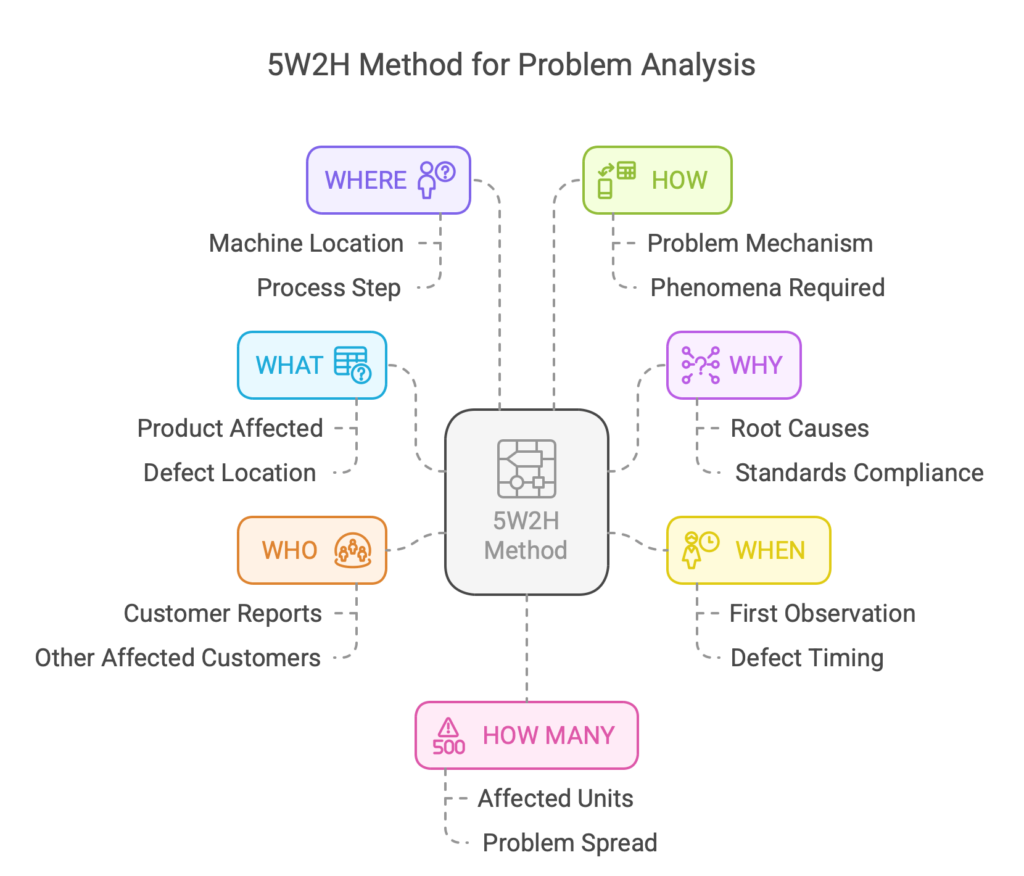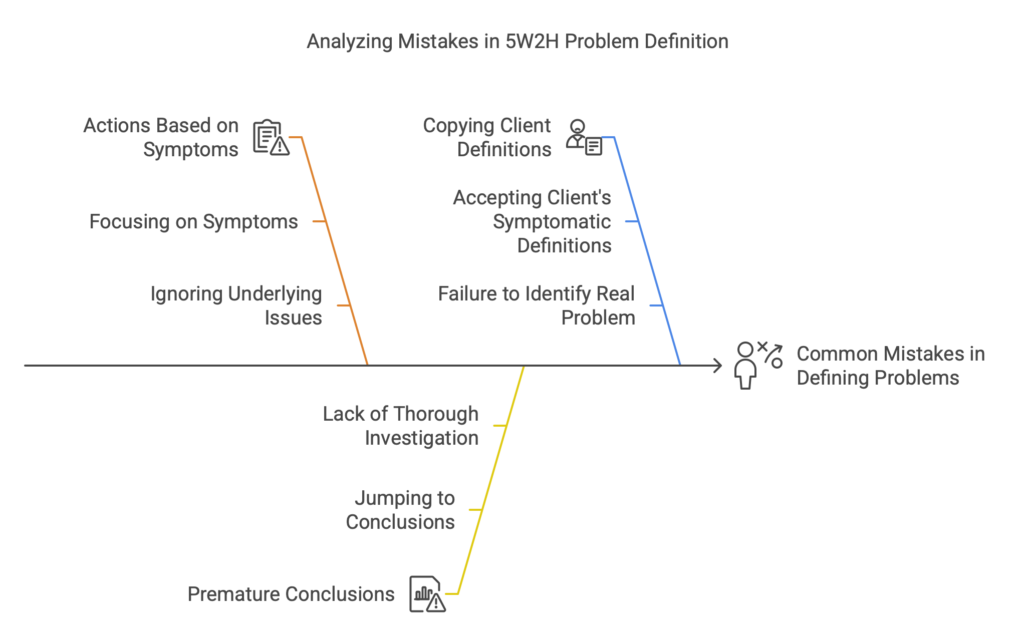One of the important elements in solving problems is the proper implementation of its description, which allows for faster resolution. This opportunity is provided by the application of the 5W2H methodology.
Quality problem solving is one of the key operational activities in every manufacturing plant. Financial costs charged by customers for complaints and their consequences generate losses that significantly affect the financial results of organizations. In some cases, they can even determine the fate of companies. Dealing with problems effectively is in the interest of both the supplier and the customer.
One of the problem solving analysis element is 5W2H methodology. It’s a part of the 8D report defined in step D2 – Problem Description.
A common mistake at this stage is to simply rewrite the information about the problem received from the customer, such as “dashboard deformation” or “front seat noise.” This type of description does not provide any specific information that can serve as a point of reference for cause analysis.
That is why it is so important to gather all relevant information. Following the 5W2H methodology, we can refine the problem description.
5W2H Question Compositions
This method gets its name from interrogative words that start with the letters “W” and “H”.

Below are all of them presented:
WHAT?
- What product is affected?
- Where does the defect appear on the product? What exactly is the problem?
- What component has this problem?
WHY?
- Why is this a problem?
- What are the known current causes for this type of problem?
- Previous analyses of internal quality problems, non-conformity tickets (NCTs), FMEA analysis records and internal audit results (for example, Layered Process Audits – LPA) will be useful.
- Are specific standards maintained: work instructions, settings, production machine maintenance and measuring equipment?
WHEN?
- When was the problem first observed? This is important as it gives a time period to focus on, to identify whether something has changed to cause the problem and if so, when.
- Does the defect occur immediately, or does it take time to materialize? This situation could be useful during the analysis of warranty returns.
WHO?
- Which customer reported the problem?
- Do other customers receive the same products and report the same problems?
WHERE?
- Where did the problem occur? On what machine exactly? At what machine settings? What process step detected the failure and what process steps should have detected the failure?
- If the answer is “at the customer,” then this information may need to be requested.
HOW?
- What is the mechanism of this type of problem?
- What phenomena must occur for the problem to occur? Potential problems can arise from the machine (wear of its parts and tools).
HOW MANY?
- How many units are affected? Based on data, how many units in the population are affected. This and the following question give an indication of the size of the problem.
- How is this problem spread across the working day? Does the problem occur randomly, on a particular shift or day?
Information on the amount of potential costs, excluding those related to safety characteristics, should be an indicator of investment opportunities for corrective actions.
Although it might seem that describing the problem using 5W2H questions takes a lot of time, it becomes clear that the answers are fundamental information needed to analyze the reasons required in point D4 of the 8D report. We will save a lot of time in the further stages of the 8D report.
At the problem description stage, we may not be able to answer each of these questions, but we can already plan the path to obtain this information. One of the most important sources of answers to questions is the results of the final product selection in the organization and customer warehouse.
Their 100% control allows us to orientate on the real scale of the problem, repeatability, size, location of the defect and the mechanism of its formation. This activity is defined as Interim Containment Actions and is placed in step D3 of the 8D report.
The most common mistakes made during defining
There are a few typical mistakes that can occur during 5W2H.

Below, we list the most common ones:
- Actions are based on symptoms, not the real problem.
- Relying on premature conclusions about the root cause (avoiding “jumping to conclusions” rather than focusing on the problem).
- Describing the problem by copying the problem definition created by the client, which is often only a symptom. The article also mentioned this example at the beginning.
They say that a proper description of a problem leads to its faster solution and the above method provides us with this possibility. For this reason, we need to remember that if we spend more time on this phase of problem analysis, it will be easier to follow the root cause analysis defined in step D4 of the 8D report.
You can download an automatic, editable Excel form for free on Free Quality Tools
Document name: 5W2H method – Excel form
Author: Dariusz Kowalczyk


